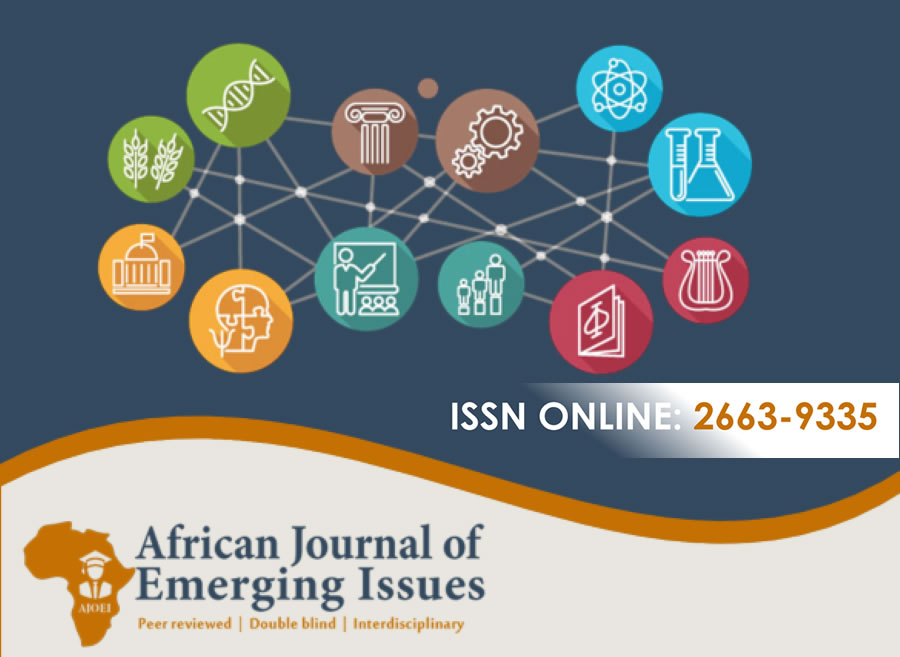GOVERNMENT EXPENDITURE AND TECHNICAL EFFICIENCY IN PUBLIC SECONDARY SCHOOLS: A CASE OF NAROK COUNTY, KENYA
Abstract
Purpose of the Study: To analyze the effect of government expenditure on technical efficiency of public secondary schools in Narok County, Kenya.
Problem Statement: Public secondary schools in ASALs such as Narok County, Kenya, face challenges in achieving optimal technical efficiency, potentially hindering student learning outcomes. While the Kenyan government allocates funds to these schools, the impact of this expenditure on efficiency remains unclear.
Research Methodology: The research study adopted a mixed research approach combining quantitative and qualitative data collection methods. The research design involved the use of existing data on government expenditure and technical efficiency metrics from public secondary schools in Narok County, Kenya.
Results of the Study: Government funding delays significantly impact public secondary schools in Narok County, with an average technical efficiency of just 59.60% and 40.10% inefficiency. Government capitation, infrastructure expenditure, teaching materials, and teacher-student ratio positively affect efficiency, while school size was found insignificant.
Conclusion and Policy Recommendation: By implementing strategic policy interventions, such as increased funding, improved infrastructure, and better teacher-student ratios, the government can bridge efficiency gaps and improve overall school performance and build on the human capital that is needed to propel economies forward.
Keywords: Technical Efficiency, Stochastic Frontier Analysis, Narok County, Kenya
References
Aigner, D., Lovell, C. K., & Schmidt, P. (1977). Formulation and estimation of stochastic frontier production function models. Journal of econometrics, 6(1), 21-37.
Awuor, J. O. (2015). Financial resource mobilization strategies and internal efficiency of public secondary schools in Rachuonyo South Sub-county, Homabay county, Kenya (Doctoral dissertation, University of Nairobi).
Becker, G. S. (1964). Human capital: A theoretical and empirical analysis, with special reference to education. University of Chicago Press.
Brown, P., & Lauder, H. (2013). Education, globalization and economic development. In Education, Training and the Future of Work I (pp. 31-61). Routledge.
Charnes, A., Cooper, W., & Rhodes, E. (1978). Measuring the Efficiency of Decision-Making Units, European Journal of Technical Research, 2, 429-444.
Coelli, T. J., Rao, D. S. P., O'donnell, C. J., & Battese, G. E. (2005). An introduction to efficiency and productivity analysis. springer science & business media.
Gałecka, M., Kuropka, I., & Szabela-Pasierbińska, E. (2022). The efficiency of public spending on education: Lower and higher secondary education. Ekonomia–Wroclaw Economic Review, 28(1), 7-23.
Grigoli, F. (2012). Public expenditure in the Slovak Republic: Composition and technical efficiency. International Monetary Fund.
Gupta, S., Verhoeven, M., & Tiongson, E.R. (2019). The effectiveness of government spending on education and health care in developing and transition economies. International Monetary Fund, 184-212.
Heckman, S. J., & Letkiewicz, J. C. (2020). Navigating risky higher education investments: Implications for practitioners and consumers. Journal of Financial Counseling and Planning.
Kanina, J. W. (2012). Technical efficiency and total factors productivity of primary schools in Kenya (Doctoral dissertation, University of Nairobi, Kenya).
KIPPRA Policy Brief, 2018-2019. Education and training budget brief. Supporting Sustainable Development through Research and Capacity Building.
Kiryowa, M. (2022). Financing of church-founded secondary schools in Uganda and its implications for their school effectiveness: a case of Kampala archdiocese, Mukono and Namirembe dioceses (Doctoral dissertation, Makerere University.
Meeusen, W., & van Den Broeck, J. (1977). Efficiency estimation from Cobb-Douglas production functions with composed error. International economic review, 435-444.
Munge, M. N., Kimani, E. M., & Ngugi, D. G. (2016). Factors influencing financial management in public secondary schools in Nakuru County, Kenya.
Mutuku, M., Korir, J., & Ngui-Muchai, D. (2019). Government expenditure and school efficiency and productivity change: A case of public primary schools in Kenya. Journal of Social Sciences, 15, 29-39.
Mutuku, S.M. (2019). Effects of government expenditure on the performance of public primary schools in Kenya. Unpublished PhD thesis, Kenyatta University.
Ngware, M. (2000). Internal efficiency and its relationship to equity in institutes of technology in Kenya (Doctoral dissertation, Egerton University).
Ogechi, V. O., & Gachanja, P. M. (2024). Efficiency and Total Factor Productivity Growth of Public Chartered Universities in Kenya. African Journal of Emerging Issues, 6(17), 1-22.
Paschal, M. J., & Mkulu, D. G. (2020). Online classes during COVID-19 pandemic in higher learning institutions in Africa.
UNESCO. (2018). Education for the 21st century: Issues and prospects. UNESCO Publishing.
World Bank. (2019). World development report 2019: Learning to realize education's promise. World Bank Publications.





